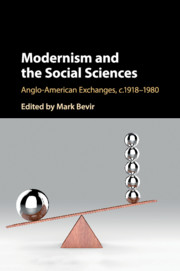Book contents
3 - Econometrics
Published online by Cambridge University Press: 21 September 2017
- Type
- Chapter
- Information
- Modernism and the Social SciencesAnglo-American Exchanges, c.1918–1980, pp. 39 - 76Publisher: Cambridge University PressPrint publication year: 2017



